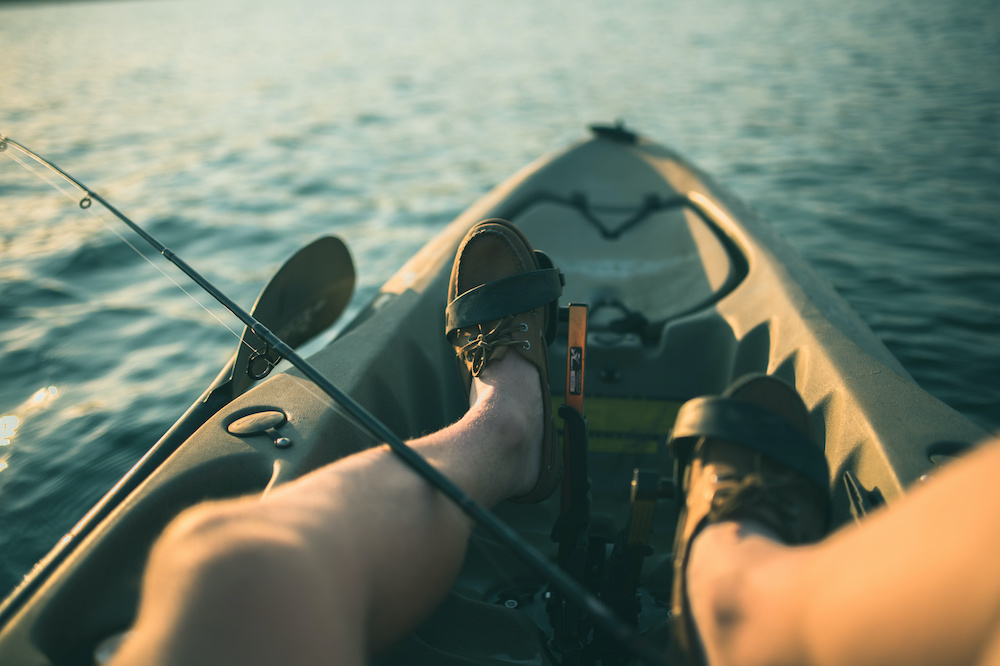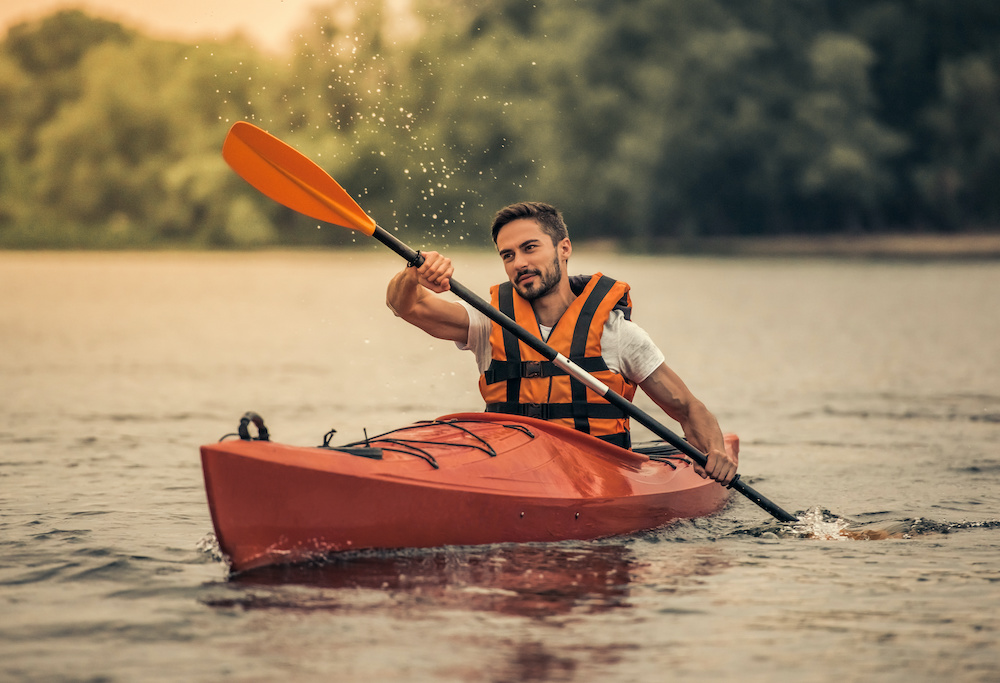What Size Kayak Do I Need?
We may earn a commission for purchases using our links. As an Amazon Associate, we earn from qualifying purchases.
Are you planning on buying yourself a kayak?
Even just thinking about it, you must be pretty excited about all the adventures you will soon have.
Like any purchase, doing a bit of research is definitely worth it to make sure you invest in the right type and model that fits your needs.
Deciding what type of kayak you want is one thing, but determining how big it should be is quite another.
Beginners often ask, what size kayak do I need?
For this, you need to determine what activity you will use it for, and then learn how to size a kayak.
Well, lucky for you, we've got that covered.
How Do You Determine What Size Kayak You Need?
The most sensible way to decide what size kayak is best for you is to consider how you will be using it.
Is it just for paddling around in the summertime, or are you hoping to go somewhere and set up camp?
Do you wish to cover longer distances or shorter ones? Do you enjoy going fast?
The answers to these questions should help you decide which kayak is right for you.
Once you know the answers to these, the next step is to look at the different kayaks available.
Different Kayak Types
The kayaks you will typically see when kayak shopping can be split into four main categories.
Below, we explain what they are used for, as well as their average sizes, to give you a better idea of kayak size and use.
Recreational Kayaks
Recreational kayaks are the most common type of kayak on the market.
They are perfect for beginners and casual paddlers because they are more user-friendly.
Because they are designed for beginners, recreational kayaks favor stability more than speed or efficiency.
If you have ever rented a kayak, it is more than likely to have been this type.
The average length of a recreational kayak is between nine and 12 feet, making them more lightweight and portable than touring style kayaks.
The beam on a recreational kayak usually falls somewhere between 18 and 34 inches.
This is wider compared to other types of kayak and is designed as such for extra stability.
Fishing Kayaks
There are many kayaks on the market that have been designed specifically for fishing.
They are very similar to recreational kayaks but are often longer and wider to provide an even more stable platform from which to fish.
Fishing kayaks are usually between 10 and 16 feet long, and the beam can be up to 42 inches wide.
The best fishing kayaks will also have built-in features to make fishing easier, such as built-in rod holders and a livewell.
Touring Kayaks (Sea Kayaks)
Touring kayaks, also known as sea kayaks, are longer and sleeker than other types.
They are specifically designed for covering longer distances and favoring speed and efficiency.
Of course, the longer the kayak is, the more storage space it may have inside the hull.
They track (stay straight) well but are slightly more challenging to steer due to their longer length.
Touring kayaks work well in a large variety of water conditions, from rivers to oceans.
They are typically between 12 and 20 feet in length (up to 26 feet for tandem craft).
Usually, the beam is anywhere between 18 and 28 inches wide.
The slimmer the kayak is, the better it will track, but it will also make it less stable.
Whitewater Kayaks
Whitewater rafts can be split down into three categories, all of which are designed specifically for kayaking in rapidly moving water.
They can range between six and nine feet, with playboats being the shortest and most maneuverable at around six feet.
Playboats are exactly as the name suggests. They are designed for performing aerial tricks, rolls, and flips on the water.
Creek boats are slightly longer at seven to nine feet and are built for more speed to cruise quickly over the rapids.
River runners are typically between seven and nine feet.
They are a cross between the two, usually having less internal volume for better maneuverability.
What Size Kayak Do I Need?
What size kayak should I get? This is one of the most common questions among beginners in this activity.
And if you’re taller than the average height, you should also ask, what length kayak do I need?
Knowing how to size a kayak is slightly more complicated than you might think.
It depends on what you’ll be using your kayak for, as well as your height.
You’ll also need to think about the width and volume to find the best option for you.
Below, we’ll talk about how these different sizing factors can affect your kayak’s performance, as well as other considerations you may wish to make when it comes to size.

What Length Kayak Do I Need?
Unless you are particularly tall, you shouldn’t be choosing your kayak length based on your height.
Generally speaking, a kayak’s length says more to the speed it can travel, as opposed to how tall its owner is.
This is because longer kayaks move through the water faster than their shorter counterparts.
Still, you should also be aware that they can be more difficult to turn and are often heavier.
Add to that the fact that the price tends to increase as the length increases.
If you don’t need your kayak to be particularly fast, around 10 feet in length should be enough.
Taller paddlers (six feet and above) may be more comfortable in a 12-foot kayak.
What Width Kayak Do I Need?
A kayak’s width is also called its beam.
The size of the beam is also an essential consideration, mainly due to the stability it offers.
Wider kayaks are usually more stable than their slimmer counterparts.
However, the wider the beam, the more speed you will sacrifice.
A wider kayak has a larger surface area touching the water, which increases the drag.
If the kayak is too wide, then paddling will be particularly difficult.
Another consideration you should make is whether the kayak is wide enough to comfortably slip your hips into.
Even if the kayak feels just slightly too small at the start of your trip, several hours later, you may be in severe discomfort.
What Volume Kayak Do I Need?
The kayak’s volume refers to its total carrying capacity.
This includes you and any gear you might want to bring with you.
The volume of the kayak is especially important if you plan on taking it fishing or on camping expeditions.
Ideally, you don’t want anything on your lap, as this will hamper your ability to paddle.
Therefore, you need to look at what floor space and storage opportunities are available.
Some kayaks will have D-rings for you to securely attach bags to, and many feature bungee nets you can stow stuff under.
Others will have storage hatches built into the shell, which are great for keeping your belongings dry.
Is a 10 ft kayak big enough?
If this is your first kayak, a 10-ft kayak is usually big enough for most people’s needs.
Most are fitted with multi-positional footrests, so you can find a comfortable position for your legs no matter what length they are.
If you often have problems with legroom (when you’re flying, for example), it wouldn’t hurt to go for a slightly longer kayak.
If you’re buying the kayak to take fishing, you may want something slightly bigger so that you have plenty of space to store your fishing gear.
When shopping for a kayak with room for storage, you should be looking at the kayak's overall volume instead of the length alone.
The same goes for if you want to take it on camping expeditions, as you need to make sure you have enough room for all of your gear.
If you want to cover longer distances or travel more speedily, you will definitely be better off choosing a longer kayak than 10 ft.
Can a 300 pound person kayak?
Yes, there’s no reason why a 300-pound person can’t kayak.
When you buy a kayak, it will have a maximum weight allowance.
You just need to make sure the weight allowance covers you and any gear you’ll have with you.
You could either buy a sturdy one-person kayak with a 400-pound weight allowance or look at a convertible one or two-men kayaks.
A two-person kayak will naturally have a higher weight allowance.
With a convertible one, you can just remove one of the chairs, and then there will be plenty of room for you and your belongings.
Just make sure that the kayak’s beam is large enough to accommodate your hip measurement so that you can sit in the kayak comfortably.
Are Longer or Shorter Kayak Better?
What size kayak do I need?
If you’ve stuck with us for the entire article, you’ll hopefully have your answer to this question.
Most people think that kayak size is connected with their height or weight, but it has more to do with speed and stability than anything else.
For this reason, you won’t find a kayak sizing guide that tells you which kayak to buy based on your height.
So, rather than ask what size kayak should I get, you should instead ask yourself what size kayak you want.
If you are looking for a kayak to paddle around to explore and take in the scenery, a recreational kayak will be your best option (nine to 12 feet).
If you are afraid of tipping over, go for a wider model if possible.
On the other hand, if you think you’ll enjoy going faster, then choose a slightly longer, slimmer model.
Many fishermen use recreational kayaks, too, mainly because fishing kayaks are a lot more expensive.
Don’t forget to make sure that the weight capacity can accommodate both you and your belongings, and have fun out there!
What Size Kayak Do I Need for My Height and Weight?
If you are roughly average in body size, you shouldn’t need to size your kayak by your height or weight.
In fact, if you google “kayak sizing guide,” you’ll more likely end up with information on how to determine your paddle length than anything else.
As mentioned previously, when picking your new kayak, you should be more concerned with choosing the length and width that suits other needs.
If you are a beginner, a slightly wider and shorter kayak may be more appropriate than a longer, slimmer model.
This is because longer kayaks usually have slimmer beams for speed purposes.
They also have a slight tendency to flip more easily.

